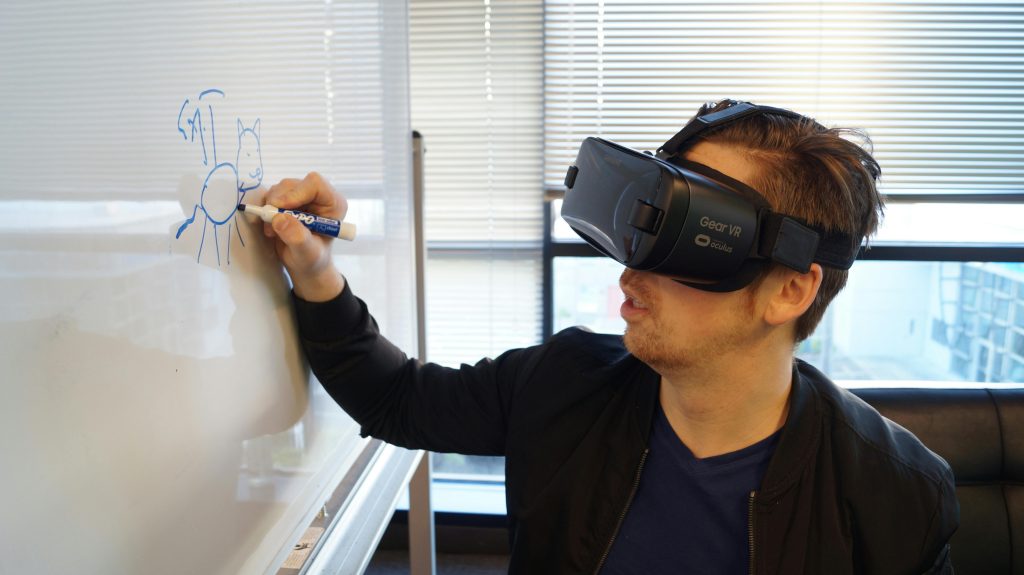In the ever-evolving world of technology, virtual reality (VR) has emerged as a transformative force, changing how we interact with digital environments. Initially developed for gaming and entertainment, VR has rapidly expanded its influence into diverse fields, including healthcare. This evolution has been driven by significant advancements in hardware, software, and application development. From the early days of cumbersome headsets and basic graphics to today’s sophisticated, immersive experiences, VR technology has made remarkable strides in a relatively short time.

Gaming: VR’s Gateway to Innovation
Virtual reality first gained prominence through the gaming industry. Video game developers eagerly adopted VR to create more immersive and interactive experiences, leading to the birth of VR gaming. Although early VR games were primitive by today’s standards, they laid the groundwork for the future of the technology.
Players could step into digital worlds and experience environments in unprecedented ways, thanks to the sensory immersion VR provided. As hardware improved and developers refined their techniques, VR gaming gained popularity, attracting a dedicated audience eager for innovative experiences. The success of VR in gaming opened the door for its expansion into other sectors, most notably healthcare.

Healthcare: Transforming Patient Care with VR
While VR technology initially found its footing in gaming, its potential to revolutionize healthcare quickly became evident. Healthcare professionals recognized the value of VR in training, therapy, and patient care, leading to a significant shift in the medical field. VR simulations allow medical students to practice surgical procedures in a realistic yet safe environment, enhancing their skills and confidence before working with actual patients.
Additionally, patients undergoing painful treatments or therapy benefit from VR experiences that distract and calm them during procedures. VR has also introduced new possibilities in mental health treatment, offering therapeutic interventions for conditions like anxiety, PTSD, and phobias. By immersing patients in controlled virtual scenarios, therapists can guide them through exposure therapy in a safe and effective manner.
Training and Education: Immersive Learning Through VR
VR has made a significant impact on training and education, offering immersive experiences that traditional methods cannot match. In fields like aviation, military, and manufacturing, VR training simulations provide hands-on experience in a risk-free environment. Pilots can practice emergency procedures, soldiers can undergo combat simulations, and factory workers can familiarize themselves with equipment operations—all within a virtual space. This immersive approach to training leads to more effective learning outcomes and better preparation for real-world scenarios.
Rehabilitation and Care: VR’s Role in Recovery
Virtual reality technology has also improved patient care and rehabilitation in healthcare settings. For individuals recovering from injuries or surgeries, VR offers engaging exercises that aid in physical therapy and promote faster recovery. Patients with mobility issues can use VR simulations to improve motor skills and regain strength in a virtual environment tailored to their needs. This personalized approach to rehabilitation enhances patient outcomes and satisfaction, making recovery more effective and enjoyable.

The Future of VR: Innovations on the Horizon
The future of virtual reality technology looks bright, with continuous advancements shaping its trajectory. As hardware becomes more accessible and software more sophisticated, VR applications will continue to expand across various industries, bringing transformative changes. From immersive healthcare solutions to interactive educational platforms, the possibilities for VR technology are vast and ever-growing. As researchers and developers push the boundaries of what’s possible, we can expect even more groundbreaking uses of virtual reality in the years ahead.
In conclusion, the evolution of virtual reality from its gaming roots to its widespread adoption in healthcare highlights its versatility and immense potential. What once seemed like a futuristic concept is now a reality, reshaping how we experience digital content and interact with the world around us. As VR technology continues to evolve and innovate, the possibilities for its applications are limitless, offering new ways to learn, heal, and connect in an increasingly digital age.




